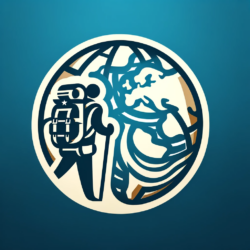Florida Roundtrip
Florida – Universal Studios
The Bahama on the Disney Wonder Cruise Ship
Four days on board of the Disney Wonder, cruising around the Bahamas, with an afternoon on Paradise Beach, a night out in Nassau and a full day on Castaway Cay, the private island of the Disney Inc. Really a nice way to start travelling around Florida!
Castaway Cay is a private island or „out island“ in the Bahamas which serves as an exclusive port for the Disney Cruise Line ships Disney Wonder and Disney Magic. It is located at 26°05′N 77°32′W near Great Abaco Island, and was formerly known as Gorda Cay. It is owned in full by The Walt Disney Company, giving them substantial control over the experience of visitors to the island. A post office on the island has special Bahamian postage specific to Disney Cruise Line, and a „Castaway Cay“ postmark.
Florida Disneyparks
Magic Kingdom is fine if you are with your kids but you can skip it if you have been to Eurodisney. The only thing they don’t have their is Splash Mountain. MGM is for moviebuffs, since it offers lots of probs from films and the Indiana Jones Stundshow is worth watching.
The „Animal Kingdom“ ranks as my favourite Disneyparks out of all four Disneyworld themeparks. There is a lot to see, the attraction don’t get stuck all the time and there is plenty of usefull informations even for adults
Epcot Center is very interresting, the rides are quiet old, expect the Crash-Test Dummie Race, but the different countries are very entertaining to visit, and don’t miss the movies about Canada, China and France, they are fantastic.
Chicago 2000
New York and Chicago 1999
Grand Canyon, Arizona and Utah
The Grand Canyon is a steep-sided gorge carved by the Colorado River in the United States in the state of Arizona. It is largely contained within the Grand Canyon National Park, one of the first national parks in the United States. President Theodore Roosevelt was a major proponent of preservation of the Grand Canyon area, and visited it on numerous occasions to hunt and enjoy the scenery.
The Grand Canyon is 277 miles (446 km) long, ranges in width from 4 to 18 miles (6.4 to 29 km) and attains a depth of over a mile (1.83 km) (6000 feet). Nearly two billion years of the Earth’s geological history have been exposed as the Colorado River and its tributaries cut their channels through layer after layer of rock while the Colorado Plateau was uplifted. While the specific geologic processes and timing that formed the Grand Canyon are the subject of debate by geologists,recent evidence suggests the Colorado River established its course through the canyon at least 17 million years ago. Since that time, the Colorado River continued to erode and form the canyon to the point we see it as today.
Before European immigration, the area was inhabited by Native Americans who built settlements within the canyon and its many caves. The Pueblo people considered the Grand Canyon („Ongtupqa“ in Hopi language) a holy site and made pilgrimages to it. The first European known to have viewed the Grand Canyon was García López de Cárdenas from Spain, who arrived in 1540.
Antelope Canyon, Arizona
Antelope Canyon is the most-visited and most-photographed slot canyon in the American Southwest. It is located on Navajo land near Page, Arizona. Antelope Canyon includes two separate, photogenic slot canyon sections, referred to individually as Upper Antelope Canyon or The Crack; and Lower Antelope Canyon or The Corkscrew.
The Navajo name for Upper Antelope Canyon is Tse‘ bighanilini, which means „the place where water runs through rocks.“ Lower Antelope Canyon is Hasdestwazi, or „spiral rock arches.“ Both are located within the LeChee Chapter of the Navajo Nation.
Antelope Canyon was formed by erosion of Navajo Sandstone, primarily due to flash flooding and secondarily due to other sub-aerial processes. Rainwater, especially during monsoon season, runs into the extensive basin above the slot canyon sections, picking up speed and sand as it rushes into the narrow passageways. Over time the passageways are eroded away, making the corridors deeper and smoothing hard edges in such a way as to form characteristic ‚flowing‘ shapes in the rock.
Monument Valley, Arizona
Monument Valley is a region of the Colorado Plateau characterized by a cluster of vast and iconic sandstone buttes, the largest reaching 1,000 ft (300 m) above the valley floor. It is located on the southern border of Utah with northern Arizona (around 36°59′N 110°6′W), near the Four Corners area. The valley lies within the range of the Navajo Nation Reservation, and is accessible from U.S. Highway 163. The Navajo name for the valley is Tsé Bii‘ Ndzisgaii (Valley of the Rocks).
The area is part of the Colorado Plateau. The floor is largely Cutler Red siltstone or its sand deposited by the meandering rivers that carved the valley. The valley’s vivid red color comes from iron oxide exposed in the weathered siltstone. The darker, blue-gray rocks in the valley get their color from manganese oxide.
The buttes are clearly stratified, with three principal layers. The lowest layer is Organ Rock shale, the middle de Chelly sandstone and the top layer is Moenkopi shale capped by Shinarump siltstone. The valley includes large stone structures including the famed Eye of the Sun.

























































































































































































